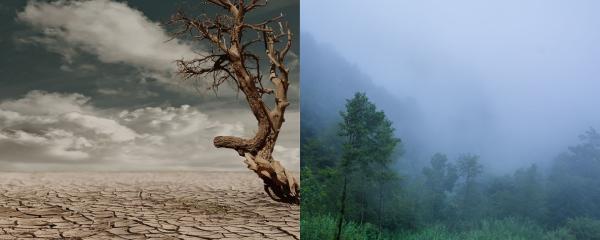
IIT Palakkad study shows how different indices used to predict drought combined with effects fof climate change can lead to different climate predictions for the future

IIT Palakkad study shows how different indices used to predict drought combined with effects fof climate change can lead to different climate predictions for the future
Science in India is in interesting times. We have some of the best scientists producing world-class research working in a host of institutions within India that are largely public funded. A large scientific workforce complimented by a promising younger generation – that is often dubbed to be our demographic dividend. A learned and competent scientific administration fighting tooth and nail for increased budgetary allocations to invest in science.
In an interdisciplinary study, scientists from the Indian Institute of Science, Bangalore, display how the use of nanotechnologies can be useful in treatment of cancer.
Scientists from the Central University of Gujarat (CUG), Gandhinagar, use computers to design the most efficient drug against TB. They apply pharmacophore modelling approach to understand the interactions between proteins found in Mycobacterium tuberculosis (Mtb) and the compounds which can suppress the bacteria.
FrogFest is a unique exhibition held at the World Wildlife Fund (WWF) office at New Delhi showcasing frogs in art and in nature. It showcases around 500 frog artefacts with a spotlight on the need for conservation of the amphibians.

Scientists from Birla Institute of Technology, Pilani, uncover the mechanism behind how plants tolerate and grow in soils with high salt content. The study also explore the role of the bacteria Enterobacter cloacae, which is a known plant growth promoting rhizobacteria.
Scientists from Indian Institute of Space Science and Technology (IIST), Thiruvananthapuram have possibly designed the first sustainable molecular keypad lock, which can also be used as a sensor of a poisonous pesticide.
The Young Ecologists Talk and Interact (YETI) conference is underway at the Maharaja Saiyajirao University in Vadodara—commonly referred to as the cultural capital of Gujarat. The four-day conference, commencing on the 22nd of January and concluding on the 25th of January, 2018, gives early career ecologists an opportunity to interact with like-minded students from across the country to exchange ideas and collaborate.
The milk you consume might contain antibiotic resistant strains of bacteria, point out scientists from Department of Veterinary Epidemiology and Preventive Medicine, College of Veterinary and Animal Sciences, Kerala, in their recent study. A drug resistant strain of Stphylococcus aureus had been isolated from udders of cows with virulence factor Panton-Valentine Leukocidin (PVL).
The words ‘insect migration’ bring to mind the vibrantly coloured monarch butterflies, making their way from Mexico to the south of Canada by the tens of thousands. Less conspicuous but just as spectacular is the migration that takes place across the Indian Ocean, which is believed to be the longest insect migration ever recorded.
A coffee table book on the C V Raman International Fellowship for African Researchers, highlighting the successful journey of the programme, was launched jointly by the Federation of Indian Chambers of Commerce & Industry (FICCI) and the Department of Science and Technology (DST).